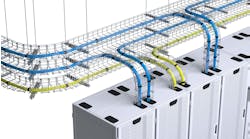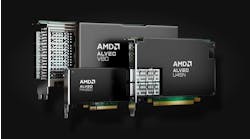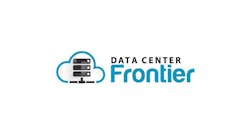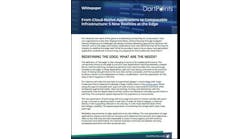Federal Broadband Mandates Driving the Need for Connectivity Hubs
The Broadband Equity Access and Deployment Program (BEAD) is well underway. Across the nation and all U.S.-owned territories, $42.5 billion in Federal funding is being deployed to construct broadband networks. These funds are allocated to companies that can help bridge underconnected communities in order to expand the United States’ broadband infrastructure with increased capacity and reach to everyone. Each state receives federal funds for specific projects; the grant dollars are distributed to businesses through an application process that validates their design and solutions that meet the program requirements. The program funds are administered by the National Telecommunications and Information Administration (NTIA), a United States Department of Commerce organization, with key deadlines and criteria required to be met along the way.
As an example, San Martin-based South Valley internet recently announced it has received up to $30 million in funding from the California Public Utilities Commission (CPUC), leveraging California’s allocated BEAD funding, to extend broadband services to underserved communities.
However, while virtually every community understands the big picture and wants the funding, they may not know…or may have overlooked…a key element in making it all happen. As BEAD funding brings high speed broadband to underserved communities, we must stress the importance of interconnectivity hubs that manage and deliver the traffic.
With the Federal Government's focus on broadband reach, inclusivity and bandwidth capabilities, network connectivity hubs are the key to managing the data and routing the digital traffic at every step of the way. Connectivity hubs, or interconnection points, or colocation and data center facilities, are where networks meet, exchange and route traffic, store and process information.
Think about this: we use the term ‘digital superhighway’ and the analogy is helpful to explain how it all works. Join me in imaging the flow of traffic along these paths; however, instead of cars, buses, trains, and bicycles, imagine data bits moving along this infrastructure. And while many cities offer express lanes for buses, data bits, the 0s and 1s that make up the digital information we exchange, can be prioritized in the same manner. For example, some network providers offer express packet delivery for high-value data bits, like streaming video and live gaming.
In highway traffic, typical connectivity hubs occur at on/off ramps. Interstate highways can feed into state roads, which then funnel traffic into county and local roads, getting traffic where it needs to go in an efficient manner. This is also analogous with how network infrastructures connect with other types of networks. For example, subsea networks like Aqua Comms connect to nationwide networks like CenturyLink, which connect to regional networks like Bluebird Network, which connect to metro-area networks like Crosstown Fiber, which ultimately connect to local networks like LiveOak Fiber’s fiber-to-the-home (FTTH) network. Each of these networks provide robust capabilities, enabling service providers to offer communications and internet services to their end-users. All of these networks rely on interconnections, which reside in data centers or colocation facilities.
Using this analogy, colocation and data center facilities are the driveways and parking garages for our data. But unlike vehicles, data doesn’t get sold or have a limit on the usable life of its data bit; it gets exchanged, stored, and saved for ongoing use, often across multiple locations. And, unlike vehicles, data bits can be repeatedly duplicated with exceptional ease, requiring even more compute infrastructure to store, process and exchange the data as it proliferates between users.
While the simile works wonders for those that know how digital infrastructure operates, general internet users and consumers do not understand the complexities and similarities. The ability to interconnect between the various “roadways” is critical to its success.
Just like what Ford and the automobile industry did in the early 1900’s to educate the Government to fund roadways, the communications infrastructure industry has been doing the same since 1832 when Samuel Morse introduced the telegraph. In just 115 years, the US roadway infrastructure has transformed to enable us to drive our Audis, BMWs, Hondas, Teslas, Volvos and other cars. For the communications sector, in the past 192 years, we have connected continents with telegraph systems that converted to telephony (traditional phone systems) which connected nearly every home for voice calls. Today, the country is upgrading this infrastructure to connect everyone to the internet to enable digital traffic. Upgrading from just voice to data services which includes voice and so much more: streaming video, audio, multimedia collaboration, and now AI-powered applications. All of them, dependent on a seamless flow of data across multiple networks, relying on interconnections along the way.
Organizations germane to the future of the country’s infrastructure, like INCOMPAS, PTC and the Data Center Coalition, are key to helping government leaders and regulators to see the opportunities ahead while warding off community outrage, while they live stream their demonstrations. And all along the way, we must keep ourselves in check. This is why organizations like the aforementioned groups, along with Infrastructure Masons (iMasons), OIX Association, and the Uptime Institute, provide industry best practices and guidelines to ensure a safe and self-regulated future for the industry.
If it is going to function to its maximum capability, the internet cannot be designed or constructed without interconnection hubs. And as we as industry experts speak with governments and regulators, we will do them (and ourselves) a favor by helping them understand the value that interconnected data centers deliver in bringing the internet to their constituents’ doors. Unless we clearly spell out that value, they may overlook the intricacies of what’s involved in bringing enhanced goods, services, jobs and tax revenues to their communities and its advantages.
Like the car, the internet has revolutionized the way we live. Highways and interconnected data centers are integral in making them achieve their full potential. As we talk with those outside our industry, let’s make sure that we clearly communicate this point, helping them understand and appreciate the benefits involved. After all, our nation is investing in bringing networks to connect us all. Let's be sure that where we connect these networks also work for us and the communities they serve.

Ilissa Miller
Ilissa Miller is the Founder and CEO of iMiller Public Relations, a PR firm providing strategic advisory services to companies in the global digital infrastructure sector.
iMiller Public Relations (iMPR) is a premier international PR consultancy firm focused on the global digital infrastructure industry, offering a wide range of services including strategic communications, media relations, and content marketing. With a strong track record of delivering impactful campaigns for data center, telecom, and technology companies, iMPR helps clients amplify their messaging and drive engagement to achieve market success.






